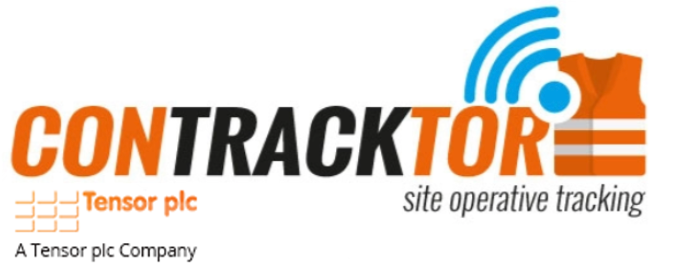Features
Within each T3588 Vest there is a rechargeable battery powered tag that uses either GPS or Bluetooth signals to determine the location of the Vest. To conserve the battery GPS and Bluetooth method are mutually exclusive.
Each T3588 Vest as has within it an RFID smart card to uniquely identify the Vest.
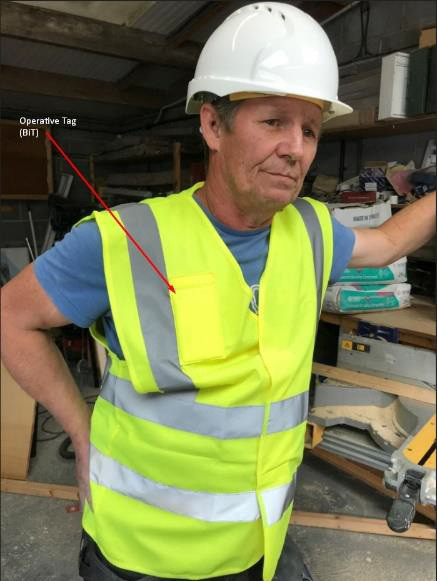
The Operatives CSCS card, or a Tensor Smart Card that is assigned to them for the duration of the project, is used to assign or pair a T3588 vest to the Operatives. The advantage of this method is that the same set of T3588 vests can be used to track a number of different Operatives on different days. Tracking data is held against an individual Operative, not the T3588 vest.
The T3591 Gateway is the central hub that collects data from the T3588 Vests and stores these within its local database. The T3591 comprises two sub-units:
T3591A
The T3591A Linux computer based transaction processing system with a LoRa module operating in the sub-gigahertz radio frequency band 433 MHz is used for long-range wireless communications to collect transactions from the T3588 Vests.
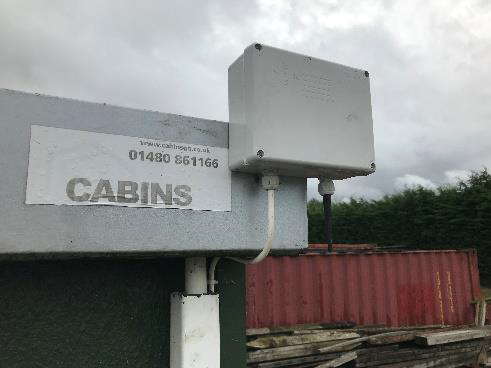
The above figure shows a close up view of the T3591A attached to a Portakabin. Where the site offices is a converted ISO container, its important that the T3591A is mounted on a timber structure proud of the steel container else the large mass of steel will cause a reduction in the range at which tags can be monitored.
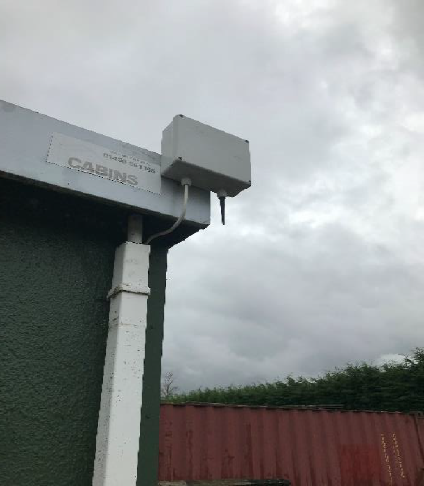
The above shows a T3591A from the ground directly below the unit. Note that the aerial is mounted downwards on the IP66 grey enclosure to minimise the risk of rainwater ingress.
The T3591A transmits transactional data to the T3521X via its one local Wi-Fi, although a standard router IP cable can be used where there is a greater distance between the T3591A and the T3521X computer.
T3521X
The T3521X Linux computer holds the ConTracktor software and database on a 16GB memory architecture. The T3521X has Wi-Fi so that PCs or laptops in the site office can be used to upload site diagrams or plans and data can be analysed. There is also an IP port for CAT5 cabling to a local router, if required.
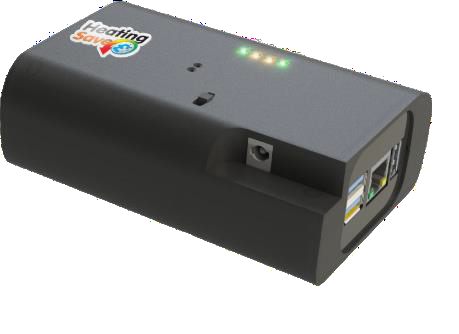
The T3521X collect and stores LoRa transactions locally on an internal SD card. This ensures good data redundancy it is also able to automatically save this data on the ConTracktor web platform, if required.
Key features:
- It includes an in-built monitoring software application that can be accessed through an Internet browser, providing the user with facilities to configure T3588 Vests, view retrieved Vest transactions and export this data for further data analysis.
- If required, connects via the Internet to automatically upload transactions to a secure server (my.contracktor.com) where there is further software to carry out large-scale analysis of multiple buildings and sites.
- The T3521X hub holds data locally (over 100 million transactions) as well as a remote database using encrypted communication, providing great resilience against data loss and protection against data hacking
- Is excellent for sites where there is no Internet connection or where there is an objection to data being cloud-based.
- Access to the T3521X is password protected and data communications are encrypted. The network connection between the Remote Device and the T3521X is via a standard Ethernet cable or through the router’s Wi-Fi network.
- A MiFare smart card reader for reading CSCS cards, smart cards assigned to Contractors and T3588 Vests.
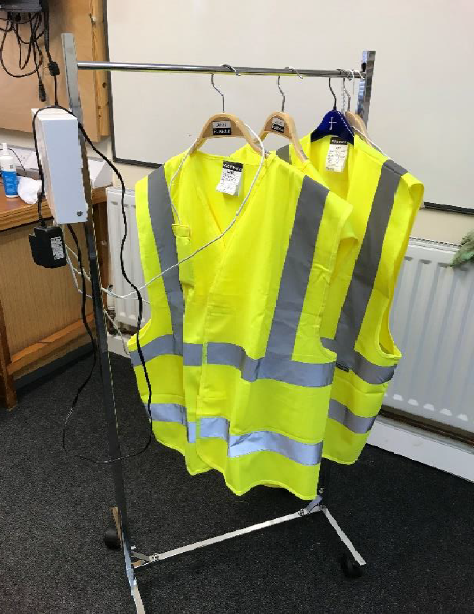
The figure above shows the T3590 charging rack used to re-charge the batteries of the T3588 vests overnight. The T3590 comprises a rack with a mains power supply and a series of charging cables, one for each Vest. The T3590 is wheeled so that it can be moved around.
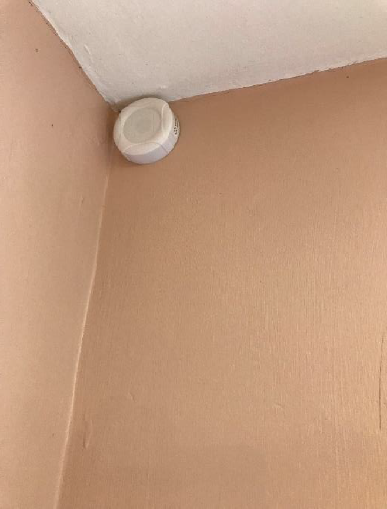
The figure above shows a Bluetooth beacon. Each beacon has two batteries which will power the beacon for around 5 years. There are two mounting holes, typically for woodscrew mounting.
It is recommended that ConTracktor beacons are similarly mounted but in the corner of a floor cassette or on a roof truss.
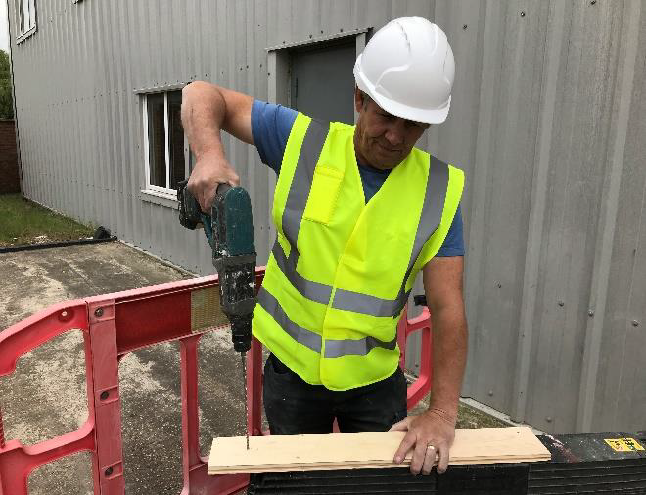
The image above shows the Operative performing work using the T3588 Vest. The Velcro pocket has been located deliberately high on the vest so that does not interfere with the Operative whilst they are working or irritate them. On a number of construction sites, Operatives do not us the Velcro tags to fasten the vest and ware them open. Through tests, we have found that the higher location of the Velcro pocket when the vest is open is more acceptable to the Operative.
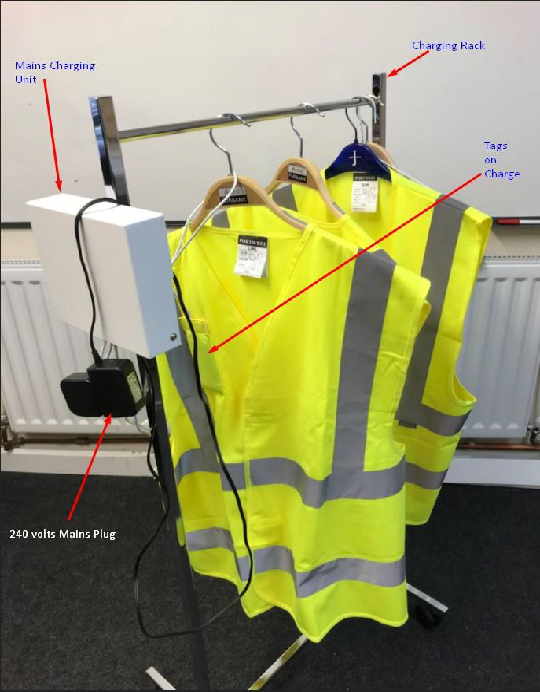
The image above shows the T3590 vest charging rack. It is annotated showing the mains plug, power supply unit and the charging cables.
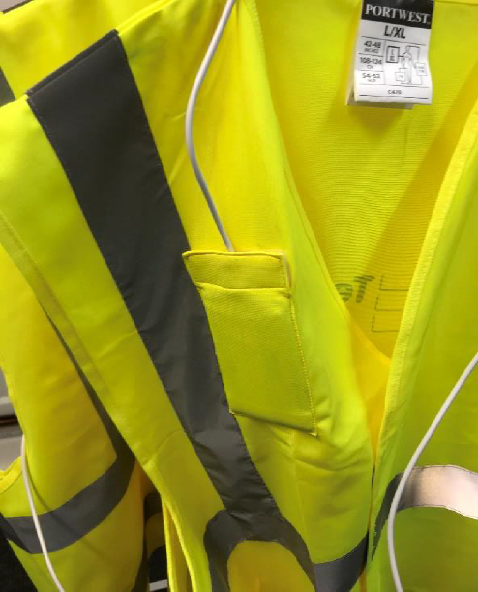
The image shows a close-up of the Vest charging point. The connector is similar to an iPhone and therefore is an orifice onto the tag. To meet the IP65 specification requirements, the tag is kept in a sealed plastic bag when in use throughout the working day.
The Velcro flap is opened and the bag opened for charging. Once the vest is fully charged (overnight) the bag is resealed and the Velcro flap closed. As can be seen from the figure, the Velcro flap is across the whole pocket to provide maximum protection throughout the working day.
